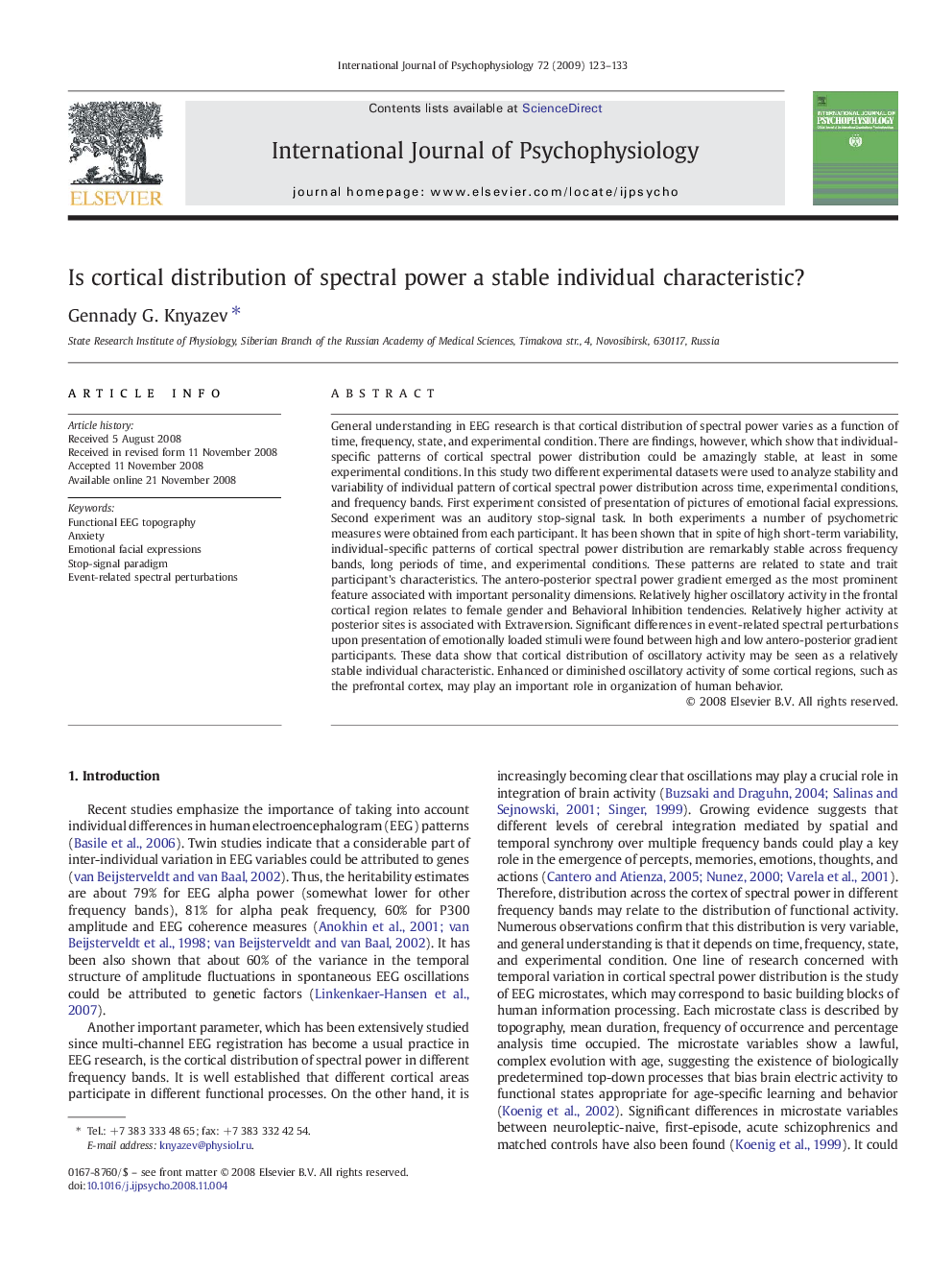| Article ID | Journal | Published Year | Pages | File Type |
|---|---|---|---|---|
| 931004 | International Journal of Psychophysiology | 2009 | 11 Pages |
General understanding in EEG research is that cortical distribution of spectral power varies as a function of time, frequency, state, and experimental condition. There are findings, however, which show that individual-specific patterns of cortical spectral power distribution could be amazingly stable, at least in some experimental conditions. In this study two different experimental datasets were used to analyze stability and variability of individual pattern of cortical spectral power distribution across time, experimental conditions, and frequency bands. First experiment consisted of presentation of pictures of emotional facial expressions. Second experiment was an auditory stop-signal task. In both experiments a number of psychometric measures were obtained from each participant. It has been shown that in spite of high short-term variability, individual-specific patterns of cortical spectral power distribution are remarkably stable across frequency bands, long periods of time, and experimental conditions. These patterns are related to state and trait participant's characteristics. The antero-posterior spectral power gradient emerged as the most prominent feature associated with important personality dimensions. Relatively higher oscillatory activity in the frontal cortical region relates to female gender and Behavioral Inhibition tendencies. Relatively higher activity at posterior sites is associated with Extraversion. Significant differences in event-related spectral perturbations upon presentation of emotionally loaded stimuli were found between high and low antero-posterior gradient participants. These data show that cortical distribution of oscillatory activity may be seen as a relatively stable individual characteristic. Enhanced or diminished oscillatory activity of some cortical regions, such as the prefrontal cortex, may play an important role in organization of human behavior.
